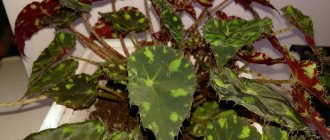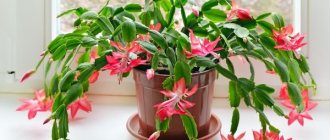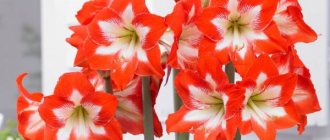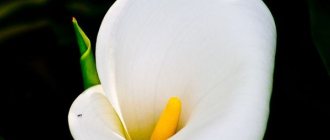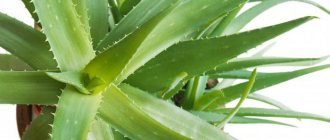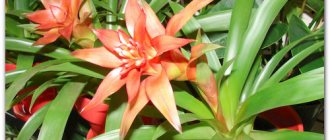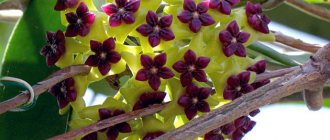» Signs » Signs and superstitions about syngonium
0
1146
Article rating
Indoor syngonium is very popular among gardeners. The decorative foliage plant has become a real decoration of many houses and apartments. There are many popular beliefs about this tropical flower. In this article we will tell you what positive and negative signs and superstitions exist about syngonium.
Signs and superstitions about syngonium
Description and origin of the plant
Syngonium is an evergreen epiphytic vine. This plant belongs to the Araceae family and can be found in nature in South and Central America, as well as in Brazil. Syngonium grows on tree trunks, and its tenacious shoots climb and curl around surfaces, aiming for the sun.
Young vines have pale green stems; they, like the leaves, participate in the process of photosynthesis. As it grows, the skin becomes rougher and changes color to brownish. Fresh shoots of Syngonium are thin, and as they grow they thicken. On average, the diameter of Syngonium stems is about 1-2 cm, and old branches can grow up to 4-6 cm. Usually the stems of the vine do not branch, but if a branch is broken or cut, then after a while fresh shoots begin to appear from the nodes.
In nature, Syngonium can grow up to 15-20 m, but at home its dimensions are much more modest and rarely exceed 2 m. Flexible and elastic shoots of the vine can grow up to 30 cm per year. During this time, the plant usually adds 6-7 new leaves.
Syngonium leaves, depending on the species, can have a wide variety of shapes. There are species with heart-shaped, spear-shaped, arrow-shaped or three-lobed leaf blades, while a plant of one species at a young age can grow foliage of a solid form, and at a more mature age acquire the features of dissected lobed ones. The color of the leaves can also be varied. While some species have leaf blades of a uniform green color, others boast a more original color. There are varieties with almost white leaf blades framed by a bright green border, and there are also types with yellow, red and pink spots, various strokes and specks.
The color intensity of Syngonium leaves depends on the lighting. Often, with a lack of light, variegated and colored leaves acquire a uniform green color.
It is difficult to achieve flowering of Syngonium indoors. In the natural environment, in the spring, unsightly inflorescences-cobs of a greenish color begin to form, almost completely covered with a pinkish or red bract-veil. Syngonium flowers are characterized by cross-pollination. Female and male flowers appear in different parts of the inflorescence-cob. Female flowers are located closer to the base, and male flowers are located at the top of the inflorescence. After pollination, cylindrical and ovoid aromatic fruits begin to form. Each fruit berry contains about 100 small seeds, which are carried by birds and animals that feed on Syngonium fruits.
The aerial roots of Syngonium are formed at the nodes of the shoots and help the vine to cling to supports or crawl along the soil cover. Feeding roots can also be distinguished at the nodes. Usually this is a single process that is slightly larger in size and deviates slightly to the side. Such a developed system allows the plant to obtain food from the soil and other surfaces.
Syngonium brief information
Syngonium is an unusual variety of picturesque, bright, unpretentious herbaceous vines and semi-epiphytic plants whose flexible stems do not branch. And this miracle joins a genus of more than thirty evergreen, perennial, fast-growing flowering monocots in the Araceae family.
The syngonium plant is native to the tropical forests of the Center and South of the northern part of the American continent. Some varieties are found in the West Indies.
The literal translation from Latin of the genus name syngonium (“syn” and “gone”) will mean a united ovule. This determines the specific course of plant development in virgin nature.
The indoor plant Syngonium is a herbaceous plant that has a thin stem with aerial roots that try to grab hold of support. The shape of syngonium leaves is varied. The leaves of young vines can be entire, lobed, or deeply dissected. They look like an arrow, a heart, a spear, and as the plant gets older, dissected three or five segmented lobed leaves can grow on it. And the variety of colors varies from green to completely white with variegated spots, streaks and silvery veins.
The unusual axillary inflorescences of Signonium have the appearance of a cob and are always in an upright position. They are located on a semi-cylindrical or triangular short stalk, which increases with the ripening of the fruit, containing about a hundred aromatic brown seeds.
The cultivated syngonium flower never blooms, but in tropical forests this beautiful plant forms a green inflorescence like a spadix with a reddish or pink bract in the form of a membranous blanket.
Syngonium has taken root perfectly at home. Many consider it a symbol of prosperity and peace. Fuchsia can be a wonderful company for this phyto beauty. Together with an elegant and beautiful syngonium, they will decorate the interior of any industrial premises or apartment.
The graceful and handsome syngonium is very close in structure and resembles a more powerful and respectable philodendron.
Is it possible to keep Syngonium at home?
Syngonium has been successfully cultivated as a houseplant for quite some time. During this time, the vine has become “overgrown” with various superstitions and signs, some of which are good and bad.
Syngonium has one unusual property - its leaves begin to “cry” when the air and soil humidity are high. This is how the plant gets rid of excess water and removes it, releasing it in droplets on the surface of the leaf blades. It is believed that in this way Syngonium can “predict” rain, since before precipitation falls, the level of air humidity rises. The same property also manifests itself with excessive watering, then the plant begins to “cry” if the soil in the pot is waterlogged.
Also, many may have heard that Syngonium in the house is a “husband’s husband.” Many vines have received such “fame,” but this is just a belief, so you should not be afraid that an ordinary indoor flower can destroy a family unit or scare men away from a lonely girl.
According to the ancient practice of Feng Shui, plants with sharp edges and ends have a negative effect on the inhabitants of the house. The arrow-shaped leaf plates of Syngonium emit “poisonous breath” that poisons human life. Therefore, in order to neutralize this energy, you can place protective amulets, talismans and other items next to the pot.
Poisonous or not for humans
Like other representatives of the Aroids, Syngonium is poisonous. The milky sap contained in all parts of the plant, when it comes into contact with the skin and mucous membranes, causes severe irritation. It is especially dangerous if juice enters the body, since toxic substances cause severe poisoning. When working with this flower, it is important to take care of personal protective equipment, and then wash your hands thoroughly with plenty of soap and water.
Despite this, you should not give up growing this highly decorative vine. Since at home they most often try to place the plant in hanging pots, it can be installed at such a height that pets and children cannot reach it.
Negative superstitions
Syngonium is an expressive, bright and very unpretentious plant. But many flower growers refuse to purchase it because of the bad reputation caused by some beliefs. This is especially true for signs and superstitions associated with syngonium for women. Like many other vine plants, it is considered a “husband buster,” capable of driving a man out of the house or even seriously harming him. The plant is defended from such accusations by many flower growers, who refute the superstition and claim that they have never noticed such an influence in syngonium. In addition, the property of negatively influencing men is attributed to a huge number of house plants. It's much easier to make a list of flowers that have never been accused of such problems.
Almost all plants with vines are considered “husbands” Unfortunately, the source of these superstitions is unknown, but partly this sign refers to the ancient Greek myth of Dionysus. As soon as he was born and immediately lost his mother, the son of Zeus was doomed to death, but was miraculously saved thanks to thick ivy. What happened angered Hera, who hated ivy: therefore, all creeping plants are often considered unfavorable for home cultivation.
Some Feng Shui practitioners also have a negative opinion about the flower. According to Chinese teaching, it has “poisonous breath,” a property that can negatively influence people and poison their lives. It's all about the arrow-shaped leaves: according to Chinese sages, the shape of an arrow in the interior of a house is unacceptable and carries pronounced negative energy. But, if you rely on the rules of Feng Shui, then it is enough to apply simple methods to neutralize this negative energy and calmly enjoy the decorative properties of syngonium. To get rid of the negative impact of “poisoned” arrows, you can do the following:
- Hang a “chime of the wind” next to the flower.
- Place a natural pure crystal near the pot.
- Position the syngonium in such a way that its sharp leaves are not directed at household members (especially during sleep or eating).
- Surround the flower with other plants with rounded leaves.
Types with photos and names
The fast-growing evergreen vine is undoubtedly attractive in any form. Various types of Syngonium are very popular among gardeners. They all have their own features that give them a special decorative quality.
Pixie
Dwarf variety Syngonium Pixie with small heart-shaped oval leaves of bright colors. The surface of the leaves is shiny, bright green with a light spot in the center and veins of the same color.
Arrow
Another compact variety. Syngonium Arrow has small, variegated, arrow-shaped leaves with green leaves adorned with white veins. This variety looks very cute. When grown, Syngonium Arrow does not have a capricious character and grows quickly if there is suitable support.
Butterfly
The large-leaved variety Syngonium Butterfly is very popular in floriculture. This vine can grow up to 1.5 m long. The leaves of the variety are distinguished by their rare, almost white color. In bright light, the arrow-shaped leaf blades begin to lighten from the midrib and become almost completely white.
Pink Spot
The unusual Syngonium Pink Spot can be grown in the form of a bush or ampel. The variety is distinguished by its rapid growth and characteristic creamy-pink leaves, which are decorated with crimson specks. Old leaves are noticeably paler. If the plant stands in a well-lit place, then its foliage will soon acquire a lighter color.
Pink Splash
The large dark green leaves of Syngonium Pink Splash are decorated with spots and specks of soft pink color.
Brocant
The leaf blades of Syngonium variety Brocant have a greenish-brown color with a pronounced glossy sheen. The veins on the leaves are red or pink.
Confetti
The Syngonium Confetti variety is quite rarely found on sale. The arrow-shaped leaf blades are strewn with pink and yellow splashes and specks. A characteristic feature of the variety is not only the unusual color of the leaves, but also their shape. Young leaves are arrow-shaped, but then they begin to change and take on the shape of an irregular star.
Panda
Syngonium Panda is characterized by rapid growth and good bushiness. The matte dark green leaves of this variety are decorated with light spots and strokes.
Legleaf
Syngonium Legleaf or Podophyllum can add about 45-60 cm per year. Its thin, elastic, climbing stems are decorated with large arrow-shaped rich green leaves. The leaves are planted on long leaf stalks, which can reach 35 cm. With age, the leaf blades acquire a dissected shape.
Auricular (Auricular)
The Syngonium auricularis species grows up to 2 m. The vine adds 70-90 cm per year. Its stems are strong and elastic with a diameter of about 1.5-2.5 cm, and become woody over time. The leaves, arrow-shaped when young, are covered with a waxy layer and colored dark green. Over time, the shape of the foliage changes to dissected and acquires characteristic small “ears” at the base of the plate. The length of the leaf blades is about 6-20 cm, and the width is about 24 cm. The leaves are planted on thin green petioles about 15-40 cm long.
Wendlanda
Although Wendland's syngonium is not characterized by vigorous growth, it has good tenacity. Its shoots attach perfectly to any support. The leaves of this vine are velvety, matte, divided into 3 segments, spear-shaped, and colored deep green. The central longitudinal vein on the surface of the leaves is white and pronounced.
Pink
The arrow-shaped leaves of Syngonium Rosea have a light pinkish tint and a soft green edge. Young leaves have a pronounced light pink color, but over time they become pale, greenish, with red veins.
Mini Pink
The miniature and neat variety Syngonium Mini Pink is decorated with small spear-shaped leaves with a pointed end. The surface of the leaves is dark green with pink veins.
Causes of yellowing leaves
The leaves turn pale and become smaller, the shoots become elongated - the result of insufficient lighting, especially in winter. It is necessary to ensure the optimal light regime: move the plant closer to the window or organize artificial supplementary lighting.
The foliage fades and loses its shine with sufficient lighting - excessive moisture and spraying. It needs to be reduced.
The edges of the leaf blades turn brown and dry - dry air. It should be kept moisturized.
Leaves turn yellow due to lack of nutrition. Feeding required.
Useful properties of the plant
In the house, Syngonium creates the atmosphere of a small tropical corner. Thanks to its rapid growth, this vine quickly fills the space provided to it, and many gardeners note its positive effect on the microclimate in the house. Syngonium has a beneficial effect on a person’s emotional state and the atmosphere in the room.
How does it affect the atmosphere in the house?
Despite the prevailing stereotypes, Syngonium is believed to protect family happiness. This flower is perfect for purposeful people, since, according to some opinion, thanks to its rapid growth, its owners solve all matters and problems much faster.
The strong leaves of Syngonium symbolize persistent character, the desire for development and personal growth of its owner. Tropical liana fills the space with life and energy.
Health effects
It is believed that Syngonium in the home has a beneficial effect on the human digestive system and contributes to the speedy cure of gastrointestinal diseases. By acquiring this tropical plant, many believe that illnesses will bypass them, and old diseases will soon be cured.
Effect on emotional state
Syngonium willingly shares its energy with the inhabitants of the home. If placed in the bedroom, it will help relieve tension, organize thoughts and get rid of nightmares.
The rapid growth of the plant helps its owner overcome the fear of the future, open new boundaries in communication with other people and overcome their complexes. For people with conservative views, Syngonium will give them a craving for new things, calm them down, and “teach” them loyalty and tolerance.
By transforming the shape of its leaves, Syngonium helps the owner himself to transform. It is great for creative people and intellectuals.
Why is syngonium dangerous?
If a person decides to acquire a syngonium, then signs and superstitions for the home are not the only things to be guided by. Like other plants of this family, the flower contains toxic substances in its leaves. Despite this, it is safe for adults: only very close contact can cause irritation when the poison gets into a wound or directly into the stomach. But if we are talking about children and pets, then the purchase of syngonium should be approached with caution. The juice of the plant should not be allowed to get on the mucous membranes or inside the body. If this does occur, you should quickly flush the area with plenty of water to prevent a reaction. If the flower is already present at home, it should be placed in such a way that it cannot harm anyone.
Home care
Even a novice gardener can care for Syngonium. This plant is very unpretentious and easily adapts to growing at home. By following simple rules, you can easily grow a healthy vine.
Choosing a seat in the room
At home, Syngonium is placed on the windowsill of an east or west window, the pot is placed on a stand, attached to a wall, or simply placed on a high chest of drawers or a closet. In this case, you should take care of the support. To do this, you can purchase a special support or stretch ropes and threads and allow the vine to freely cling to the surface.
It is better to protect Syngonium from working heating sources, so when choosing a corner to install a flower pot, it is important to ensure that the branches of the vine do not fall off and are not close to radiators and heaters.
What kind of pot and soil do you need?
Choose a tall, stable pot for planting with good drainage holes to remove moisture.
Syngonium is undemanding to soil composition. It grows well in loose, well-drained soil with a slightly acidic or neutral reaction (6-7 pH). A suitable soil mixture can be prepared from leaf substrate, turf, peat and sand (1/1/1/0.5). Coal, finely chopped brick, bark and bone meal are added to the finished soil.
Lighting
Syngonium is one of the shade-tolerant plants. He loves good light, but is afraid of intense sun exposure. In diffused light or in light partial shade, the flower will feel as if it were in its native, natural environment.
Species and varieties with monochromatic leaves feel best in a shaded place, while variegated, bright varieties, when exposed to too intense light, begin to lose their properties and acquire a pale, unsightly color.
Watering and spraying
In order for this wildly growing vine to grow and develop harmoniously, it is necessary to constantly maintain the earthen ball in a moderately moist state. In hot weather, Syngonium is watered abundantly, and with the arrival of winter, watering is reduced to moderate and the soil is moistened as the top layer of soil dries out.
If water has accumulated in the pan after watering, it must be drained. Water for irrigation must first be settled at room temperature.
In summer, Syngonium should be frequently sprayed with warm, soft water and the leaves should be wiped to remove dust.
Air humidity
Syngonium loves a moderately humid climate. In winter, it is removed away from working batteries, as dry air burns the beautiful leaves of the vine. To increase humidity, you need to frequently spray the leaves, install a household humidifier, an aquarium nearby, or place a flower pot on a tray with wet pebbles or expanded clay.
Feeding and fertilizer
From spring to autumn, Syngonium is fed with liquid mineral preparations for decorative foliage crops. When choosing a fertilizer for fertilizing, it is important to pay attention to the composition and give preference to fertilizer with a minimum calcium content. Nutrient formulations are applied once a month.
Pruning and crown formation
Syngonium tolerates pruning well and is easy to shape. It can be grown without pruning or pinching as an ampel form, or several branches can be planted in one pot at once to form a neat bush.
To make side branches appear more actively, shoots of Syngonium are pinched above 6-7 leaves. You can also form a beautiful tree with the help of vertical supports, which Syngonium shoots willingly entwine.
Rest period
In winter, Syngonium stops growing. At this time, they stop feeding it and reduce watering to once every 7 days.
Bloom
As a rule, it is almost impossible to achieve flowering of Syngonium at home. But when grown in a greenhouse in the spring, you can observe the appearance of a small inflorescence-cob. After the inflorescence wilts, it is better to remove it so that the plant does not waste energy feeding the seeds.
Errors in care and ways to eliminate them
Despite its unpretentiousness in terms of growing conditions and care, if it is placed incorrectly, there is a lack of light and the wrong watering regime is selected, Syngonium may experience discomfort. Most often, the following signs indicate errors in care:
- Changing the color of variegated leaves to a single color is a lack of light. The plant should be moved closer to the light source.
- Change in leaf color to paler, lack of shine - excessive watering or poor drainage. In this case, replanting into a new pot with holes and a high-quality drainage layer helps, and the watering regime is adjusted depending on the speed of drying of the top layer of the pot’s contents.
- Plaque, spots on the leaves - poor quality water for spraying. Stains and plaque are removed with a soft damp cloth or sponge, and the water for spraying is pre-boiled and cooled, or infused.
Possible difficulties during cultivation
When kept at home, the following difficulties may arise:
- Drying of the edges and tips of the leaves - dry air.
- Dark spots on leaf blades, burns - this is how the plant reacts to exposure to direct sunlight, waterlogging of the substrate, low air temperature and cold or hard water for irrigation.
- Pale, dull leaves signal high humidity in the room.
- Slow growth, young leaves grow small - lack of sun or nutrients.
- Yellowing of stems and leaves is an excess of nutrition; it is necessary to reduce the concentration of fertilizer or the frequency of fertilizing.
- The roots protrude above the surface of the earthen clod - transplantation into a new pot is required. If it is not yet possible to transplant the Syngonium, then you can add a little fresh substrate to hide the exposed roots.
How to propagate and replant a flower at home
At home, the flower is propagated by cuttings and shoots. Both methods are quite effective.
Reproduction by shoots
Propagation by shoots involves the following steps:
- A shoot with dormant buds is cut off from an adult plant.
- The container is filled with an equal mixture of sand and peat. The resulting soil is well moistened.
Escapes - The cut shoot is placed on the soil and slightly pressed inward. Staples are used for fixation. Some gardeners advise making a longitudinal cut on the side of the shoot in contact with the soil. To speed up the rooting process, you can treat the shoot with a root growth stimulator.
- The container is covered with film. You can make several holes in it or leave it whole and ventilate the vine every day.
- When the shoot takes root, it is transplanted as an adult plant. If there are several growth points on it, dividing the shoot is acceptable.
Note!
Caring for the shoot involves maintaining moist soil and maintaining temperature conditions. The room should be warm, but it is undesirable to allow temperatures above 27℃.
Cuttings
You can get a new vine from a cutting as follows:
- The apical shoot is cut off from the syngonium.
- The cutting is placed in water with an activated carbon tablet previously dissolved in it. The water is replaced every 3-4 days. For speedy rooting, place a plastic bag with holes on the container with water.
Cuttings - When the plant takes root, it is replanted as an adult vine.
The cuttings are rooted at temperatures from 22℃ to 27℃. Material can only be taken from an adult plant. Cuttings can also be rooted in a damp sand-peat mixture.
Transfer
The transplantation procedure and crown formation are closely related.
The transplant procedure consists of the following steps:
- Choosing a pot. If the vine's roots are pushing through the drainage holes, this indicates that it is crowded. The pot is selected larger, but not huge. In a pot that is too spacious, the plant will devote all its energy to developing the root system to the detriment of the growth of greenery.
Root system - Place a good drainage layer on the bottom of the pot. If support is required for cultivation, it is fixed in the drainage. How to properly install the support during transplantation can be seen in the photo.
Support for syngonium - A little soil is poured onto the drainage layer. Then the syngonium is transferred onto it and the roots are carefully straightened.
- Holding the plant, the voids of the pot are filled with the remaining soil.
- The soil is lightly trampled and moistened.
The transplantation procedure is carried out in spring or early summer. Young vines are replanted annually, adults - every 2-3 years. After transplantation, the flower cannot be fertilized for 2 weeks. If the plant has extra shoots that protrude from the general shape, they are cut off so that the vine has an aesthetic appearance.
Disease and pest control
With proper care and maintenance conditions, Syngonium is rarely attacked by pests and almost never gets sick. A healthy plant has good immunity, but if a “green neighbor” infected with parasites or diseases appears nearby, then the disease soon spreads to all potted plantings.
Signs of rot
Rot affects Syngonium at low air temperatures and excessive watering. If the stems of the plant begin to darken, this indicates that the root system is damaged by gray rot. Then the damaged stems are cut off and the plant is replanted. During transplantation, the roots are cleared of soil, damaged areas are removed, the cuts are treated with charcoal, or the root system is washed with a weak solution of potassium permanganate. After this, Syngonium is transplanted into a new pot with a complete replacement of the substrate.
When a plant is infected with rot, it is better to immediately root the remaining healthy parts of the shoots.
Aphid
Aphids feed on the sap of young leaves and shoots. It is based in the lower part of the leaf blades, and the result of its activity is pale, yellow, deformed leaves that soon fall off. Aphids often appear at low air humidity and high temperature.
If the extent of the damage is still limited to only a few leaves, then they are simply removed, but in more advanced cases it is better to resort to the help of insecticides.
Shchitovka
Scale insects attack stems and leaves. Then you can notice a slowdown in the growth of Syngonium, partial or complete drying of the foliage. If measures are not taken in time, the vine will soon wither and die. Removing pests with a soapy sponge, a warm shower and treatment with insecticides helps.
Trips
Thrips settle on the lower part of the leaves, after which the surface of the plates becomes covered with light spots. In advanced cases, the entire leaf becomes grayish-brown and acquires a metallic sheen. In this case, the affected parts are removed, and the plant is treated with chemicals against pests.
Spider mite
Mites entangle leaves and stems in a dense web. The infected plant withers, fresh leaves become deformed and fall off. In the fight against ticks, traditional methods and chemicals are used. You can wash Syngonium with soapy water, give it a warm shower, or use insecticides.
How to grow syngonium?
The main thing when growing any type of syngonium is to create constant conditions without large differences. This plant loves warmth and moisture, but reacts very negatively to sudden changes. The placement of the pot and support should be approached with care, but if everything is done correctly, then further care will not be difficult.
Syngonium is considered one of the best plants that purify the air in the house. Moreover, it is credited with an amazing ability to absorb formaldehyde from the environment, and in this only spathiphyllum can compete with it.
How comfortable the plant is can be judged by the color of the syngonium leaves. Signs and superstitions for the home also affect the variability of the flower, but it is important to remember that with age it begins to transform on its own, regardless of the conditions of its maintenance. Syngonium, being from the tropics, loves diffused sunlight and lives quietly at some distance from windows. It is best to place it on eastern or western window sills.
Syngonium grows well in rooms where high air humidity is achieved naturally. For example, they can decorate a wall in the bathroom or kitchen. But it is important to avoid those areas of the rooms where there are serious temperature changes. You should not place the syngonium close to the stove, refrigerator or heated towel rail. Comfortable temperature for the plant is 20-22 ºC, the minimum permissible is 16 ºC.
Planting and transplanting
Young Syngoniums are replanted every year in the spring, and older ones every few years, when the roots begin to protrude from the pot. When replanting, a thick layer of drainage made of expanded clay, brick, clay shards or any other materials is placed on the bottom of the dish.
Preparatory work
The new pot should be slightly larger than the previous one, otherwise Syngonium will concentrate all its efforts on growing the root system. If the plant was recently brought from the store, then it is given at least a week to adapt, and only then do they begin replanting.
If you wish, you can take care of the support, which you can purchase at a flower shop or build with your own hands.
Step by step process
The process of transplanting Syngonium is quite simple and does not require special knowledge. The transplant is carried out in the following sequence:
- A drainage layer is formed at the bottom of the pot.
- The pot is filled 1/3 with prepared soil. At the same stage, the support is secured.
- The roots of Syngonium are carefully straightened and immersed in the pot.
- The dishes are filled with soil.
- The plant is well watered. After complete absorption of moisture and shrinkage of the contents of the pot, add a little substrate.
- The water that has flowed into the pan is drained.
For the first 2 weeks after transplantation, the plant is not fed; it is often sprayed and watered well. After Syngonium takes root in the new pot, it will actively grow and begin to grow new leaves and shoots.
Formation of the syngonium crown
The ability to independently form a crown is one of the advantages of growing syngonium. If the gardener has experience in handling this plant, the vine becomes a pliable “line” in the hands of a master who knows his business. There are a number of pruning recommendations that allow you to achieve a variety of shapes. A liana can be turned into a beautiful climbing flower, a ball, a dense bush and even a tree.
If syngonium is planned to be grown as a climbing plant, only 1 vine is placed in the pot. Every spring, excess shoots are cut off from it, which spoil the appearance. If additional volume is required, you should pinch certain shoots from the 6th leaf. New shoots will appear at the pinching site.
Curly syngonium
The vine can be grown in the form of a green ball suspended from the ceiling. To do this, when transplanting, 1 or more supports are dug into the pots. Plastic or bamboo tubes are used. The support should protrude 10-15 cm from the pot. For greater effect, you can place several plants in one pot at once. The vines are allowed to twine along the supports. Excess shoots are removed in the spring.
Syngonium can be grown as a compact bush. To do this, several plants are placed in one pot at once. All shoot tips are cut off, starting from the 7th leaf. This pruning helps achieve maximum bushiness.
To grow syngonium in the form of a tree, perform the following steps:
- Coconut fiber is filled with sphagnum moss and rolled into a tube.
- The resulting support is fixed in the tub when replanting the plant.
- The vine is wrapped around a support, directing its aerial roots to the coconut fiber.
Formation of the crown
The plant clings to the support with its adventitious roots, twisting around it. Poor-quality shoots are pruned every spring. Sphagnum moss is systematically moistened. This provides additional nutrition to the adventitious roots.
Reproduction
Syngonium can be propagated quite easily by the vegetative method, rooting apical and stem cuttings. Planting material easily takes root at any time of the year, but it is best in spring or summer. Cuttings allow you to get a new vine in a short time.
Planting apical cuttings
For rooting, select the upper parts of shoots about 10-15 cm long with 2-3 internodes and aerial roots. Cuttings root well in water or a mixture of sand, moss and peat. Until the cuttings grow roots, they are covered with a glass jar or film and kept at a temperature of +25-+27 degrees. After rooting, the cover is removed and the seedlings are planted in pots with substrate. To make the plantings look more lush and dense, you can place several seedlings in one pot at once.
Rooting a piece of stem
To propagate Syngonium by stem, you must first prepare a pot with a nutrient substrate, according to the preferences of the crop. The dishes are placed near the plant, a long branch with well-developed aerial roots and several nodes is selected and pinned to the soil surface. Aerial roots need to be buried in soil or slightly buried in part of the stem. Until the cuttings have taken root, they are watered and fertilized, and after 1-2 weeks, after part of the shoot has acquired its own root system, it and the mother plant are separated.
Why do you dream
According to the sign, seeing a luxurious syngonium in a dream means prosperity. If the vine looks sick and its branches are dry, this portends quarrels with loved ones or separation. The esoteric dream book gives a different interpretation of the dream - if you dreamed of a flower, then you will have to communicate with an unpleasant person, an energy vampire. When talking with such people, you feel a loss of strength, irritation and emptiness.
Syngonium in the interior: photo
In phytodesign, Syngonium can be found in many applications. It fits perfectly into any interior, and thanks to the ability to grow this vine in a hanging pot, you can form a vertical green carpet or allow the flower to hang freely.
If you install a support, you can give the Syngonium almost any shape. The liana will quickly cover the surface offered to it.
Miniature varieties of Syngonium will definitely appeal to lovers of unusual indoor gardening. Dwarf varieties are perfect for decorating florariums in solo planting or as part of a composition.
In the house, Syngonium creates a unique atmosphere of warmth and comfort. This plant even brings a part of the tropical forest to an ordinary city apartment. With simple care, Syngonium will delight its owner with a graceful and elegant look all year round.
Beliefs associated with Syngonium
There is an opinion that this vine is a “husband’s runner” and that reckless lady who grows syngonium will certainly lose her life partner, who will just up and leave the house.
It is not entirely clear where such a strange judgment came from, which is not at all confirmed in practice.
Mystically minded individuals, on the other hand, draw a parallel between accelerated changes in life and rapid growth, the ease of formation of new shoots on the syngonium.
As a result, it is recommended to grow it for those who have been waiting for a long time and cannot wait for change.
